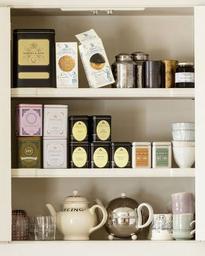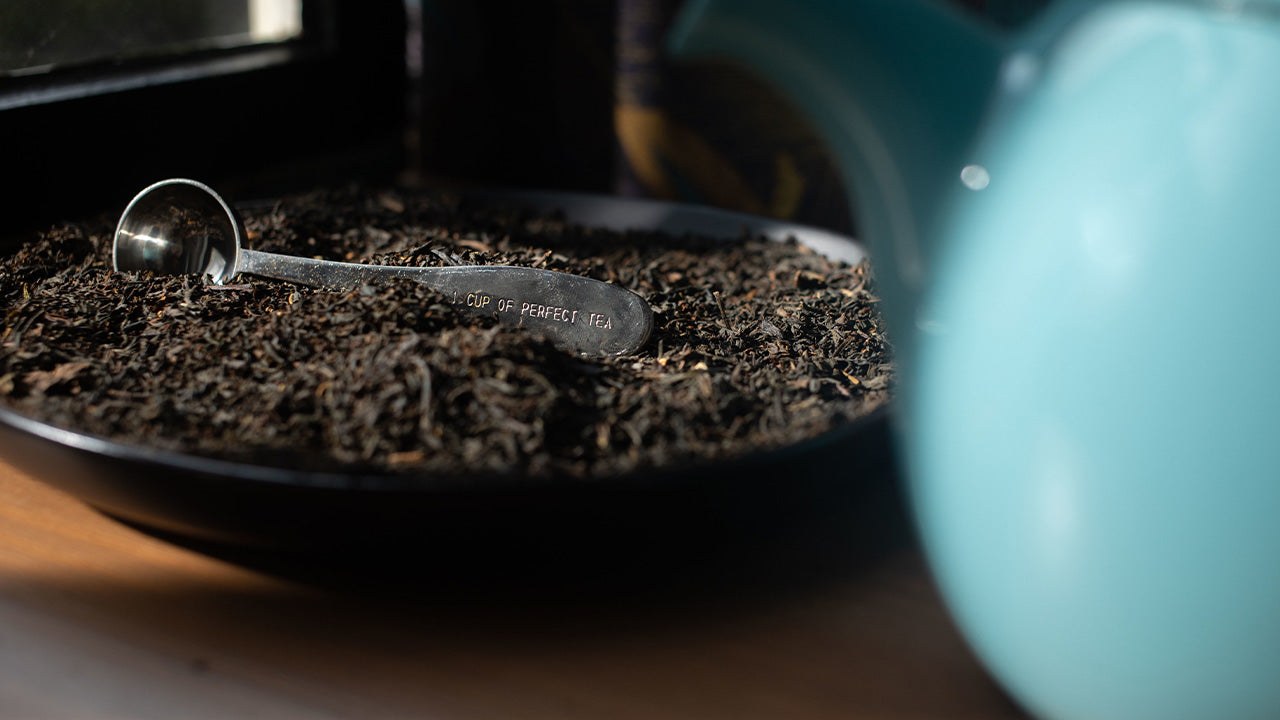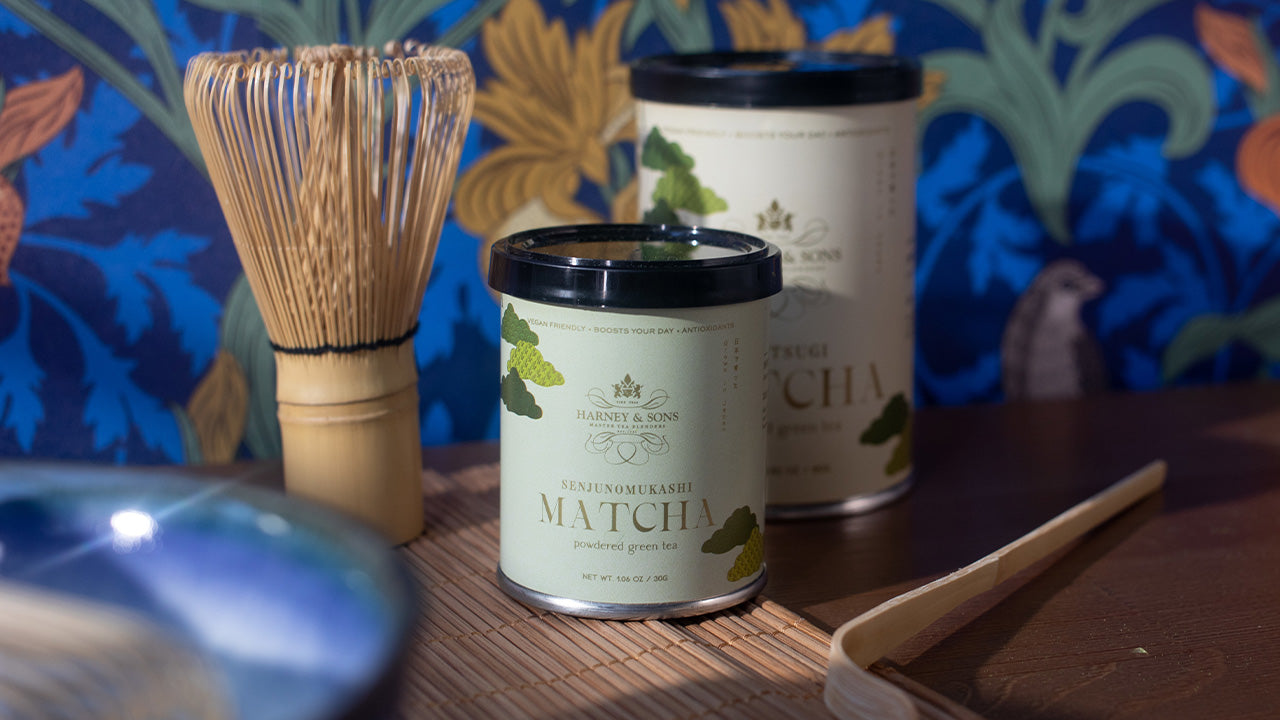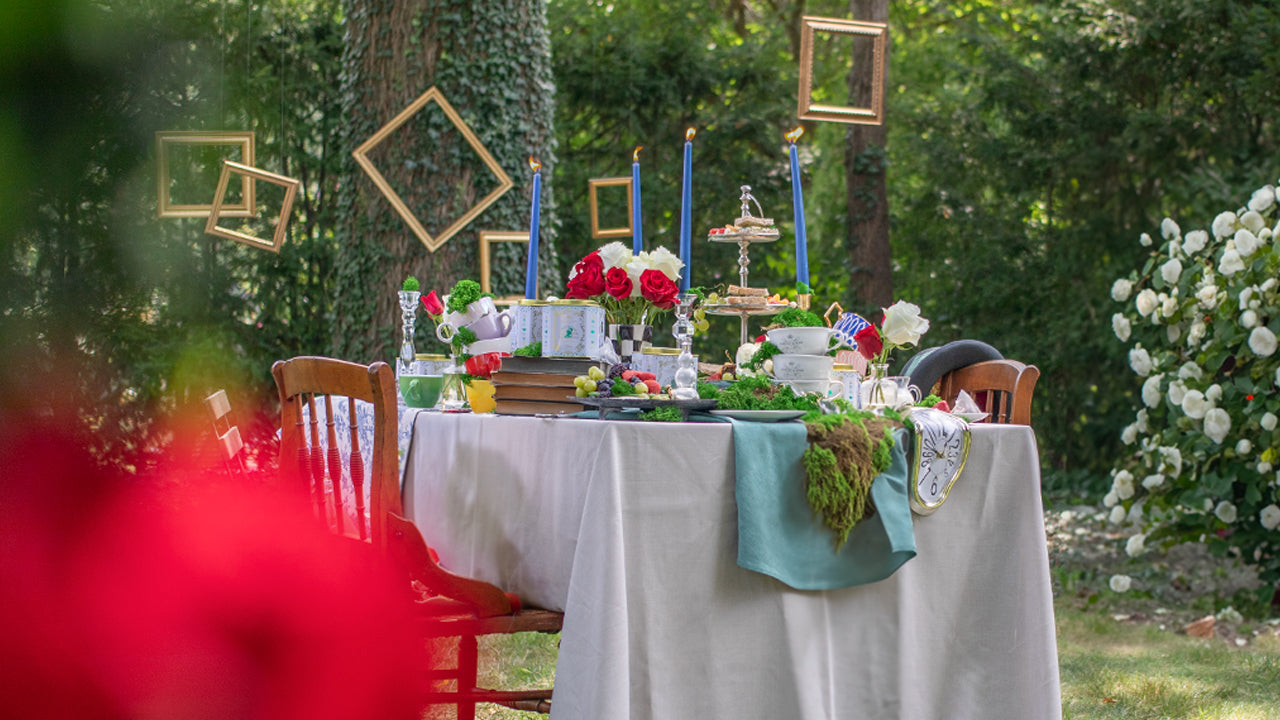Looking for ways to have less caffeine in your tea-drinking rituals without losing flavor? There’s no need to worry about loss of flavor when you drink Harney decaffeinated teas. Our methods of creating decaffeinated teas ensure that the quality of the tea doesn’t suffer at all.
If you’re wondering exactly what decaffeinated means versus caffeine-free or herbal teas, we’re here to make all those terms crystal clear as well (hopefully as crystal clear as the water you use to brew your tea!).
What Does Decaffeinated Mean?
All teas made from the Camellia sinensis plant contain natural levels of caffeine (and all black, green, white, and oolong teas come from the Camellia sinensis mother plant). Caffeine is one of many self-defense chemicals a tea uses to keep bad things at bay while the plant grows. We use caffeine to repel sleep; a tea plant uses it to repel bugs.

Decaffeinated tea is tea that was naturally caffeinated until put through a process to remove the chemical that helps wake you up. Some of our most popular decaf black teas include Vanilla Comoro, Decaf Earl Grey, Decaf Hot Cinnamon Spice, Decaf Paris, and Decaf Darjeeling. Caffeine-free "teas" are not teas at all but blends of herbs, flowers, spices, and dried fruit – herbal teas. Our popular decaf chai tea, Organic Rooibos Chai, falls into this category. When there is only a single ingredient, such as our Chamomile or Peppermint Herbal, these are referred to as pure tisanes.
So, when it comes to taking tea with caffeine and making it decaffeinated, there are two ways to extract all or almost all the caffeine. Here are the decaffeinated tea processes we use at Harney to make sure you have all the quality and flavor you want without the caffeine.
The Carbon Dioxide (CO2) Tea Decaffeination Method
The carbon dioxide (CO2) tea decaffeination method is how we decaffeinate our loose teas. Choosing to use this process ensures that we don’t lose the flavors and health benefits you love in our caffeinated teas. When put through this process, our tea leaves are placed with naturally occurring gas, CO2, at a high pressure and high temperature. The carbon dioxide reaches a “supercritical state” where CO2 becomes almost a liquid solvent, and it attracts the caffeine molecules and removes them from the tea. Since flavor molecules are larger than caffeine molecules, they remain intact, and the flavor of tea remains the same.
The Ethyl Acetate Decaffeination Method
The second method we use is ethyl acetate. This method is used to decaffeinate the tea found in our teabags. During this process, the molecules of caffeine bond to the molecules of ethyl acetate and are removed. Our customers prefer this method for our teabags.
Other Decaffeination Methods
There are two other decaffeination methods used for hard coffee beans, but these methods do not work for fragile tea leaves - the water processing decaffeination method, also known as the Swiss water method, and the methylene chloride decaffeination method.
A final DIY method that we do not recommend is double-steeping your tea. Many tea lovers believe that if they steep their favorite caffeinated tea, dump the water, then steep again it will decrease the amount of caffeine in the cup. Unfortunately, this is a bit of an old wives’ tale. Studies show that tea keeps giving off caffeine for about eight minutes. This method is not recommended as it dilutes the flavor of your tea.

What About Decaffeinated Green Tea?
Many people assume that because green tea is so healthy, it is caffeine-free. Actually, green tea, in general, has more caffeine than black or oolong tea. This doesn’t diminish the many health benefits of green tea, it simply means that if you need to watch your caffeine levels, you should drink your green tea in lovely moderation.
Currently, we do not carry any decaffeinated green tea or decaf matcha options, but in addition to the many caffeine-free herbal options with healthful benefits, with rooibos teas being a leading example, many best-selling customer favorites come in decaf form, such as Decaf Hot Cinnamon Spice, Decaf Earl Grey, Decaf Paris, Decaf Darjeeling, and many more.
No matter your reason for drinking caffeine-free tea, whether it’s doctor’s orders or wanting a good night’s sleep, you can find a decaffeinated tea you’ll love at Harney & Sons.





5 comments
Joanne
Thank you explaining! Is it not possible to simply use the CO2 method for all of the teas to decaffeinate them while loose and add to tea bags afterwards? I prefer teabags for convenience, but prefer the CO2 method as a more natural way of extracting versus using the chemical ethyl acetate. It seems the co2 method also preserves the flavor of the tea leaves better. Thanks and love your teas.
Thank you explaining! Is it not possible to simply use the CO2 method for all of the teas to decaffeinate them while loose and add to tea bags afterwards? I prefer teabags for convenience, but prefer the CO2 method as a more natural way of extracting versus using the chemical ethyl acetate. It seems the co2 method also preserves the flavor of the tea leaves better. Thanks and love your teas.
Rodney D. Cunningham
Great article. Please consider adding a decaf Keemun. Thanks.
Great article. Please consider adding a decaf Keemun. Thanks.
Michelle B
Interesting article. I would love more decaf tea options. Specifically, decaf English Afternoon. Can’t find that anywhere. A loose leaf decaf Irish Breakfast would be nice. Oh and a decaf Black Currant. Thanks!
Interesting article. I would love more decaf tea options. Specifically, decaf English Afternoon. Can’t find that anywhere. A loose leaf decaf Irish Breakfast would be nice. Oh and a decaf Black Currant. Thanks!
Melisa Piekarski
Thank you for the wonderful information, I have always wanted to know how you can make tea decaffeinated and now I know. I like both caffeinated and decaffeinated tea certain times a day though. The comoro is my favorite! I have hundreds of teas at home in the Camaro is one of my absolute favorite go-to’s, I like to have it in the evening before I go to bed to relax and also the best chamomile tea I have ever had is from harney and sons! Love your product and love all of you who created for us! Big hugs and have a tea on me LOL
Thank you for the wonderful information, I have always wanted to know how you can make tea decaffeinated and now I know. I like both caffeinated and decaffeinated tea certain times a day though. The comoro is my favorite! I have hundreds of teas at home in the Camaro is one of my absolute favorite go-to’s, I like to have it in the evening before I go to bed to relax and also the best chamomile tea I have ever had is from harney and sons! Love your product and love all of you who created for us! Big hugs and have a tea on me LOL
Debbie Lannom
Good article! I love your teas!
Good article! I love your teas!